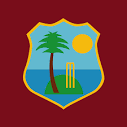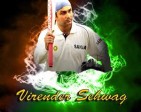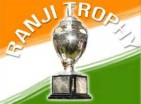The Mightly West Indies – A Glorious Legacy Beholds The Men from the Caribbean who have become one dimensional cricketers
Gautam Lalotra |
Once hailed as the Kings of the International cricket, the Mighty West Indies are a mere shadow of their glorious past. The Windies who dominated the game for almost two decades, till the Aussies took over their mantle are languishing at the bottom of the cricketing world when it comes to the longer format of the game. The charisma, punk and flair which were associated with the Caribbean style of playing is now only limited to the T-20 arena where the team is still a force to reckon with. Perhaps playing as free lancers in the money spinning T-20 leagues across the world takes priority over wearing the maroon uniform and representing the West Indies. The board has had its own set of financial and administrative troubles for long which have severely impacted the on field performance of the team. This sums up the declining story of West Indies cricket which doesn’t seem to end.
The Early Period (Up to 70s)
Going back to their glorious history, The initial credit for putting West Indies on the cricket map shall go to the 3 W’s of WI Cricket namely, Sir Frank Worrell, Everton Weekes and Clyde Walcott. Meanwhile Wes Hall, Charlie Griffith and Roy Gilchrist pioneered the art of pace bowling in the West Indies which later on became synonymous with their cricket. Learie Constantine, CA Davis, Conrad Hunte and Gerry Alexander were the other great cricketers of that era. The prolific George Headley who was given the title of “Black Bradman” was the first great cricketer to come out of the West Indies. Sir Garfield Sobers went onto become the greatest all-rounder test cricket ever saw. Then came along batting stalwarts like Roy Fredericks, Rohan Kanhai, Lawrence Rowe and Alvin Kalicharan who were considered the best of their time with the willow in their hand.
The Golden Era (Mid 70s to Late 80s)
The West Indies teams of the late seventies and eighties were the powerhouse of International cricket. The team had all the ingredients to reach the lofty heights they achieved. Such was their dominance in the test arena that from 1981 to 1994, Windies didn’t lose a single test series. This is testimony to their consistency and dominance in that era. The Windies dominated the ODI arena too with their firm hold on the first two World Cups (1975 and 1979) and reaching the finals of the third WC at Lords (1983), only to be beaten by underdogs India in the grand finale.
Gordon Greenidge and Desmond Haynes were the most formidable opening pair in test cricket for a decade. Sir Vivian Richards took batting to another level with his destructive stroke play and aggressive attitude to decimate bowlers all around the world. He truly became the poster boy of Windies cricket in the 80s. The team had a brilliant leader, able batsman and astute captain in Clive Lloyd who proved to be the ideal mentor for fine-tuning the skills and talent of a team full of superstars. Jeffrey Dujon was one of the best with the gloves at that time. Besides them, the Windies had the services of Gus Logie and Larry Gomes who played their part in making the team virtually unbeatable. But what really set Windies apart from rest of the test playing nations of that era was their fearsome pace battery of Colin Croft, Michael Holding, Joel Garner, Andy Roberts and Malcolm Marshall. They were unique in their own ways. If Garner and Roberts were the big burly seamers who extracted bounce from even placid wickets, Holding was menacingly quick with one of the smoothest actions ever, meanwhile Marshall was the tireless workhorse who gave it all to take wickets. Apart from these greats they had the luxury of Sylvester Clarke and WV Davis, who both were more than handy in seaming conditions. The late eighties saw the emergence of Patrick Patterson and Courtney Walsh who carried on the fast bowling legacy to the next decade.
The 90s (Brian Lara Era)
In the 90s too, the Windies were a formidable batting unit under the aegis of Captain Richie Richardson. They had the flamboyant batting maestro in Brian Lara who made batting look so classy and effortless with his exaggerated back lift and late shuffle across the crease. The “Prince from Port of Spain” who had a penchant for scoring big hundreds became the mainstay of the Windies batting for a decade and a half. They had the talented Guyanese Carl Hooper who was very handy with both bat and ball, but never lived up to the potential he showcased. Jimmy Adams had a dogged defence and showcased resilience and sound temperament in the test arena. The Windies boasted of all-rounders like Keith Arthurton and Phil Simmons who did well in the limited overs arena. Roger Harper was their ace spinner and a brilliant fielder too. Recently retired batting legend Shivnarine Chanderpaul who had the crabbiest technique in the world, proved to be a prolific run scorer and the work horse of the team for nearly two decades at the test level. Besides them, they had useful batsmen in Sherwin Campbell, Stuart Williams and the big hitting Philo Wallace who opened the innings for the Windies during that timeframe.
In the 90s, Courtney Walsh and Curtly Ambrose formed a deadly pace bowling attack to torment the best batting line-ups in the world and they were well supported by the pacy Ian Bishop and the Benjamin Brothers. The Windies continued to have a battery of pace bowlers in Mervyn Dillon, Nixon McLean, Cameron Cuffy, Reon King, Vasbert Drakes, Jermaine Lawson, Pedro Collins and Franklyn Rose who all did well in the limited overs arena but none quite went onto reach the heights achieved by their predecessors.
The West Indies team combined well as a unit by reaching the semi-finals of the 1996 World Cup held in the subcontinent. They seemed to be in full control of their semi-final class against the Aussies, only to be foxed by the spin and guile of the Australian spinning wizard Shane Warne.
The New Millennium
With the turn of the century, their standout player has been the big Jamaican, Chris Gayle who would go down as perhaps the most destructive stroke player in modern day cricket. Gayle has been West Indies biggest match winner by a mile in the ODI and T-20 format. Wavell Hinds opened with Chris Gayle for a brief duration. Ramnaresh Sarwan looked like a compact and technically sound player, who prospered for a couple of years in the test arena and ODI’s too. Meanwhile the talented Marlon Samuels did reasonably well in the limited overs area. Ricardo Powell, a hard hitting batsman promised a lot but fizzled away from the international scene rather quickly. Ridley Jacobs was their standout wicketkeeper and an aggressive batsman who could open the innings in the ODI format.
The Windies continued to produce pace bowlers like Jerome Tayor, Daren Powell, Tino Best, Fidel Edwards, Corey Collymore, Ravi Rampaul and off late Kemar Roach who all have done well but lacked the consistency to deliver in the longer format. Perhaps one thing which didn’t come naturally to West Indies was spin. Apart from Lance Gibbs, they never had a world class spinner in their ranks for a long time. We have seen the likes of Suleiman Benn, Devendra Bishoo and Shane Shillingford perform well in the test arena in recent times.
Entering the tournament as potential underdogs, the West Indies team surprised the cricketing fraternity by winning the ICC Champions Trophy in 2004. It was a moment for the Windies to savour after a long time considering their long drought of major titles at the international level.
The Present Team
The current Windies team looks a destructive force when it comes to the T-20 Format. They have an outstanding record in the ICC T-20 World, being crowned champions once (2012 World T-20) and reaching the semi-finals on two other occasions (2009 and 2014). Led by Chris Gayle who has become a legend in T-20 cricket courtesy his bludgeoning stroke play which has swung many matches for his country. They have all-rounders like Keiron Pollard, Dwayne Bravo, Darren Sammy and Andre Russell who have been very destructive with the bat and can bowl some handy seamers too. The batting looks solid and compact with Lendl Simmons, Dwayne Smith, Daren Bravo and Marlon Samuels. They have a decent wicketkeeper batsman in Dinesh Ramdin. The pace attack is being led by Jason Holder who has been ably supported by Kemar Roach, Shannon Gabriel and the veteran Jerome Taylor. Sunil Narine is perhaps the best off spinner in the T-20 arena owing to his subtle variations and has served the West Indies well. Samuel Badree is another spinner who plies his trade cleverly in the T-20 format.
So in a nutshell the side looks like a well-balanced unit in the shorter format, but when it comes to test cricket, they probably lack the mental fortitude, temperament and application to counter the demanding nature of test cricket. The lack of efficient cricket administration and financial woes have resulted in the board/player standoffs which has been detrimental to the cause of cricket in the Islands. The young generation in the Caribbean took to sports like basketball and soccer to make more lucrative professional careers in North America. Athletics too has had an impact on diminishing cricket’s popularity as the likes of Usain Bolt, Asafa Powell and company, have become demigods and role models for youngsters to emulate in the region with their proven success at the global level.
International cricket surely wants West Indies to get back to their best and entertain the cricket fans globally with their Calypso brand of cricket. West Indies brought in that element of Caribbean fun and flair which has been missing for long in their cricket. We could probably end by quoting and hoping, “May the sun shine again in the Caribbean and the Calypso Kings be back amongst the best!!!!!!





I keep reading about the effects of Basketball, can anyone name me one kid from the Caribbean who is playing NBA or in the American Soccer League? I just can’t think of one.
Comment by MItchell Hall | 4:40am GMT 15 February 2016